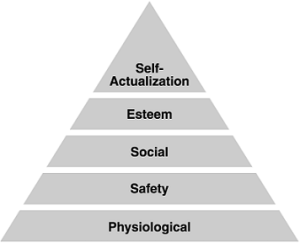How do you measure whether you have an energizing culture? We instinctively know that a positive culture enhances employee engagement. The question is how are companies supposed to gauge their cultures? What are the best practices for measuring culture success/shortcomings?
We generally know two things about culture: 1) a positive culture leads to an engaged workforce, and 2) most organizations have no idea how to measure the positive and negative aspects of their cultures.
Check out these disconcerting employee engagement statistics:
– 64% do not feel they have a strong workplace culture.
– 49% are not satisfied with their direct supervisors.
– 66% see no opportunities for professional growth.
– 25% feel they do not have the tools to be successful in their jobs.
– Only 21% feel strongly valued at work, generally due to lack of appreciation/recognition.
– Only 42% know their organization’s vision, mission, and values.
People are starting to pay attention to culture – so much so that “culture” was Merriam-Webster’s #1 word last year. But, what we really need to do is find a way to successfully measure it.
94% of business leaders worldwide believe that culture matters, but only 5% currently measure it. We painstakingly measure everything in our businesses, including sales performance, SEO, margins, expenses, etc. Why not spend as much time and energy on measuring culture? After all, you are what you measure – if a firm measures A and B, but not X and Y, people will naturally focus on A and B. Those areas will continue to be emphasized and strengthened, and X and Y will fall by the wayside. Such is the case with culture.
There are ways to roughly gauge culture with the naked eye – are your employees referring others to work for your company; are people quitting for perceived greener pastures; is the parking lot empty at 5:01PM. Yet, in the same way that you wouldn’t blindly trust a gut feeling or water cooler chatter, those observations won’t cut it in the long run when assessing culture or engagement.
Of the minority of companies that do measure their cultures, most do so via surveys once a year (or once a quarter). By the time responses are collected, reviewed, and analyzed, there’s usually been a shift in leadership, an updated product, or a shift in technology or market opportunity, which makes the data outdated and ultimately unhelpful. Companies are dynamic. Industries evolve. Technology moves at a rapid-fire pace. To stay on top of our game, we must reinvent employee engagement for the digital age. We must better gather, evaluate, and analyze big data, and this must be done through something more than an occasional employee survey.
Tips to successfully measure culture:
– Seek frequent feedback. Continuously gather data. If you wait until the end of a year to survey employees, you’ll probably get feedback on the previous month. It’s important to gauge in real-time, not in annual retrospect.
– Cater to the ADD generation. If you ask more than 1-5 questions, people start to lose interest and/or stop responding authentically.
– Communicate with employees how they want to be communicated with. Whatever’s most convenient and useful for your employees, talk to them that way (e.g. email, text, app).
– Assemble a data-driven dashboard and analytics. Get meaningful measurements with easy-to-understand variables.
– Use open-ended inquiries to spark robust responses. Empower employees to solve problems, express what they need, and act upon what they tell you.
Pro tip: 5 top engagement tools on the market today:
1. Bluebridge. Bluebridge engagement apps stand out by also driving recognition, productivity, strategy, and centralized communication alongside employee surveys.
2. TINYpulse. The famous trailblazer of the micro-survey industry, TINYpulse is a simple way to keep your finger on the pulse of employee engagement.
3. Culture IQ. Launched in October of 2014 by Greg Besner, entrepreneur and professor at NYU Stern, Culture IQ proves “great culture can be inspired anywhere, even in an elevator.”
4. GLINT. The first primarily iOS-based of these tools, Glint offers survey pulses that take less than a minute and operate live, so you can keep tabs on your organization in real time.
5. 15five. Neither anonymous nor general, 15five helps team members and managers engage in stimulating, constructive e-conversations.
Culture is crucial to your bottom line and deserves to be monitored, measured, and maximized!
